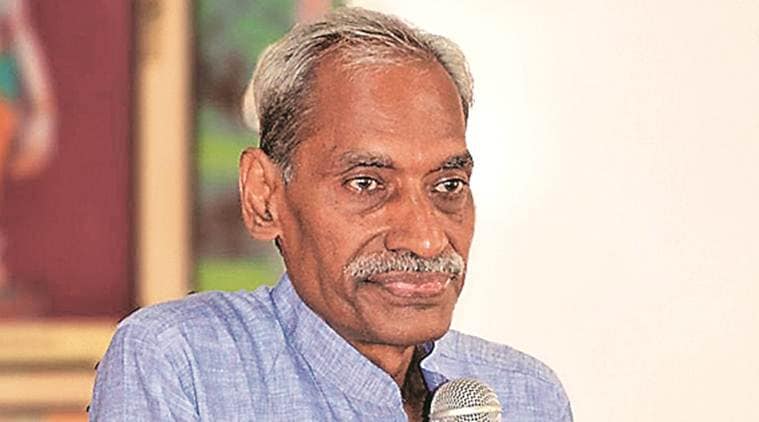THE ECONOMIC Survey on Thursday mentioned Zero Budget Natural Farming (ZBNF) along with Vedic Farming, Homa Farming and Cow Farming — and how these “climate friendly” agricultural practices can enable “elimination of chemical pesticides” and restoration of soil organic matter and fertility.
But an even bigger push for ZBNF and the 70-year-old behind it — Subhash Palekar — came in the Union Budget speech of Finance Minister Nirmala Sitharaman on Friday, where she talked of the need to “go back to basics” and “replicate this innovative model (that) can help in doubling our farmers’ income in time for our 75th year of Independence”.

The Survey said ZBNF is being practiced by 1,63,034 farmers. Palekar estimates the number to much higher — “over 50 lakh”.
According to the “zero budget” concept, farmers won’t have to spend any money on fertilisers and other agricultural inputs. While over 98% of the nutrients that crops require — carbon dioxide, nitrogen, water, solar energy — are already present in nature, the remaining 1.5-2% are taken from the soil, after microorganisms convert them from “non-available” to “available” forms, for intake by the roots.
This is where the special package of practices which, Palekar says he perfected during the 1990s at his 36-acre farm in Belura village of Amravati district in Maharashtra’s drought-prone Vidarbha region, comes in.
The “four wheels” of ZBNF are ‘Jiwamrita’, ‘Bijamrita’, ‘Mulching’ and ‘Waaphasa’, says Palekar, a Padma Shri awardee.
Jiwamrita is a fermented mixture of cow dung and urine (of desi breeds), jaggery, pulses flour, water and soil from the farm bund. This isn’t a fertiliser, but just a source of some 500 crore micro-organisms that can convert all the necessary “non-available” nutrients into “available” form.
Story continues below this ad
Bijamrita is a mix of desi cow dung and urine, water, bund soil and lime that is used as a seed treatment solution prior to sowing.
Mulching, or covering the plants with a layer of dried straw or fallen leaves, is meant to conserve soil moisture and keep the temperature around the roots at 25-32 degrees Celsius, which allows the microorganisms to do their job.
Waaphasa, or providing water to maintain the required moisture-air balance, also achieves the same objective.
Palekar also advocates the use of special ‘Agniastra’, ‘Bramhastra’ and ‘Neemastra’ concoctions — again based on desi cow urine and dung, plus pulp from leaves of neem, white datura, papaya, guava and pomegranates — for controlling pest and disease attacks.
Story continues below this ad
Asked if this isn’t just organic farming, Palekar says: “No. There, they use farmyard manure or vermicompost mostly produced from Eisenia fedita, a species imported from Europe and Canada. These foreign earthworms accumulate heavy metals like lead, arsenic and cadmium, which get transferred into their castings that, far from being manure, are actually toxic to the soil. So, the soil fertility, instead of improving, only reduces”. He says that in ZBNF, the work of making nutrients available to plants is done exclusively by microorganisms from Jiwamrita and “local earthworms”.
However, not all farmers are convinced about ZBNF.
“He says his technique is zero-budget. But what about the cost of labour for collection of dung and urine, apart from the other inputs used in preparation of Jiwamrita, Neemastra or Bramhastra? Keeping cows is also a cost that has to be accounted for. How many farmers can afford to keep desi cows that yield very little milk,” says Deepak Bhise, a tomato grower from Yedgaon village in Pune district’s Junnar taluka.
He points out that if ZBNF is practiced in isolation, the crop grown would be vulnerable to attacks by insects and pests which may move there from fields where chemical pesticides are being sprayed.
Lalit Patil Bahale, leader of farmers’ organisation Shetkari Sanghatana, is even more dismissive: “These so-called techniques are being promoted only for denying farmers cutting-edge technology, including genetic modification. They are a cruel joke being played on Indian agriculture”.
Story continues below this ad
But Palekar is not deterred. “Many state governments, including Kerala, Karnataka, Andhra Pradesh, Himachal Pradesh, Chhattisgarh and Karnataka have openly supported ZBNF after studying its efficacy,” he says.
The ultimate recognition, though, may have come from the latest Union Budget.

 Subhash Palekar
Subhash Palekar






























